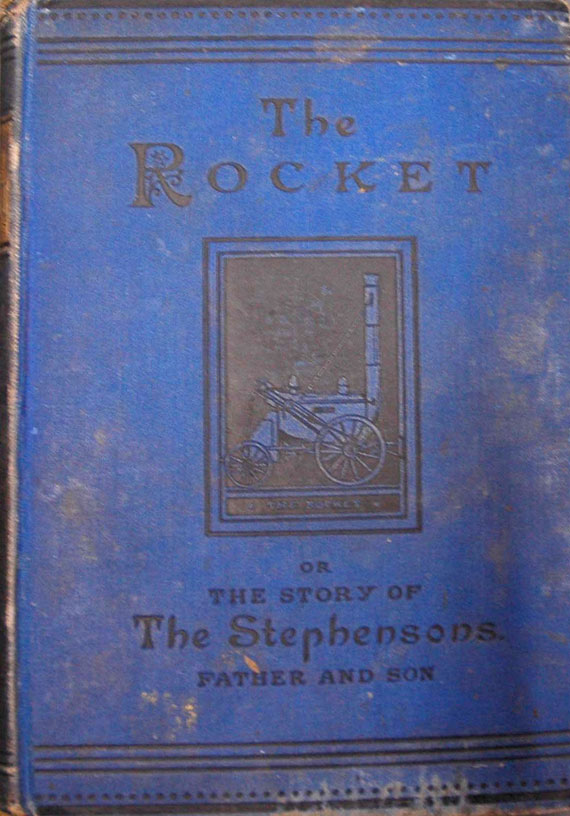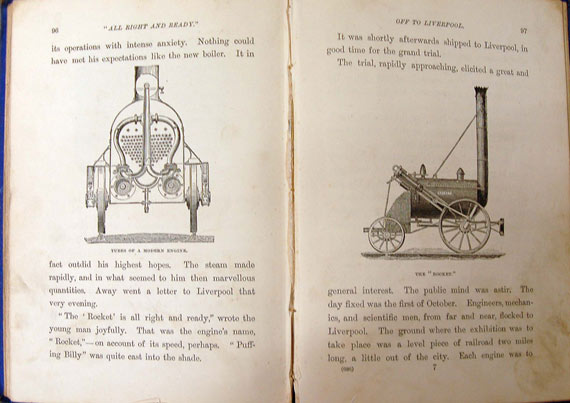Cabinet 2: Railways – In the Beginning


H. C. Knight, The Rocket. The Story of the Stephensons, Father and Son. London: T. Nelson, 1882.
Although George Stephenson (1781-1848) and his Rocket are perhaps better known in railroad history, there were earlier pioneers in the field who also achieved: William Jessop (designed the first iron rails for use with flanged wheels); Richard Trevithick (his ‘Catch-Me-Who-Can’ on a circular track in Bloomsbury); and Matthew Murray (the first ‘rack’ locomotive). In 1814, Stephenson designed his Blücher, using single-flanged wheels, and in September 1825, he was successful in running his Locomotion No. 1. His Rocket combined a steam blast-pipe and a tubular boiler, which formed the basic make-up of the ‘modern’ steam locomotive. It travelled at an average of 12 miles per hour while hauling 13 tons. After riding it in 1829, Thomas Creevy wrote: ‘It is really flying, and it is impossible to divest yourself of the notion of instant death to all upon the least accident happening.’

